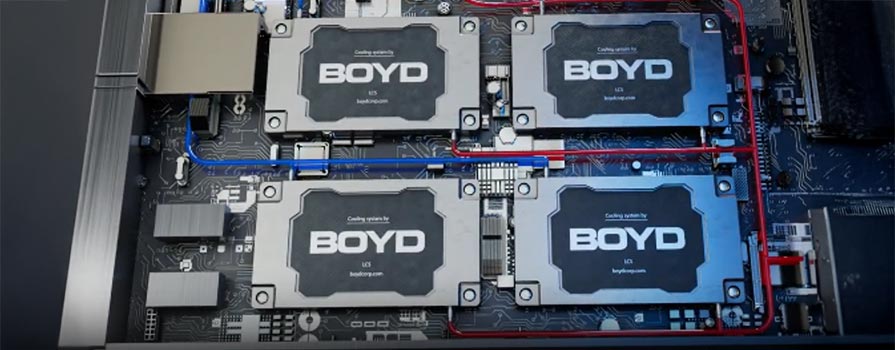Lithium-ion (li-ion) batteries are one of the most commonly used types of rechargeable batteries on the market and can be found in everything from electric vehicles and medical equipment to handheld consumer electronics and energy storage systems.
As battery pack designers continue to push lithium-ion battery limits by increasing energy density and capacity, thermal management systems must continue to evolve to safely mitigate and protect against increased heat before it builds up to cause thermal runaway.
Thermal Runaway and Why is it Important?
Heat is produced through a chemical reaction during rechargeable battery charge and discharge cycles. This heat is a necessary by-product for a battery to operate, but if left unchecked or the battery was poorly designed, it can quickly build up in the enclosed space of a battery cell or pack. When heat builds up more quickly than it dissipates, it causes a chain reaction called thermal runaway in li-ion batteries. As the heat increases, the battery releases more heat through an exothermic reaction, which in turn drives the temperature higher and higher.
If left unmanaged, thermal runaway can cause device malfunction, battery cell degradation, fires, or even explosions. Preventing thermal runaway with a robust thermal management system and smart battery design is key to guaranteeing user safety, ensuring battery integrity, and reducing warranty costs.
How Do You Prevent and Manage Thermal Runaway?
There are three main ways Boyd manages thermal runaway.
Thermal Management:The most important consideration with any heat producing component is thermal management. To protect batteries against thermal runaway, heat needs to dissipate from battery packs more quickly than it can build, which is unique to each battery’s capacity, application, and geometry.
It is important to design batteries with this in mind, incorporating thermal interface materials, liquid cold plates, thermally conductive adhesives, thermally conductive enclosures, and ultra-thin vapor chambers to cool and protect battery cells.
Preventing Thermal Runaway Conditions:Proactively preventing the conditions that allow thermal runaway is another important prevention method. While lithium is a highly efficient metal for batteries, it is also highly reactive with any kind of moisture, forming lithium hydroxide. In small quantities, lithium hydroxide can lower battery performance, and in large quantities, can cause batteries to combust.
When designing a battery cell or pack, it is critical to ensure that any gaps or joints where moisture or foreign object debris (FOD) can enter are properly sealed. Boyd offers many different gasketing, sealing, and adhesive solutions optimized for ideal compression set, force deflection, and other mechanical factors to waterproof battery packs and cells, not allowing any moisture ingress. Boyd’s gasket solutions also manage shock and vibration, minimizing degradation to battery pack seals from extreme road conditions to ensure seals stays intact throughout the life of the battery.
Incorporating electrical insulation materials in and around the battery cells (such as LectroShield, is important to prevent shorting and sparking, which can also drive heat and lead to thermal runaway.
Isolating Thermal Runaway:
While proper thermal management and prevention strategies can help reduce the chances of a thermal runaway event occurring, it is important to design batteries to prevent propagation if a catastrophic event occurs. Driver and public safety is the number one concern in transportation with duplicated safety measures designed into critical applications. Keeping the individual battery cell or affected component isolated is critical as a backup safety design to contain thermal runaway if thermal management or preventative designs fail.
Initially designing the battery packs with this in mind is the best way to isolate any thermal runaway event. Incorporating flame barriers made of flame-retardant materials (such as SOLIMIDE® foam or polymeric insulators) in between battery cells can prevent fire from reaching other thermally sensitive components should a thermal runaway event occur.
The Boyd Difference
Boyd has strategic alliances with raw material suppliers globally for adhesives, foams, thermal interface materials (TIMs), shielding, insulators, and many other advanced engineered materials. We combine these partnerships with our extensive manufacturing capabilities and design expertise to create multilayer stack-ups of materials optimized to prevent and isolate thermal runaway for your battery application.
Our engineers have decades of experience offering design support, ensuring components are designed for manufacture (DFM) and optimized for assembly. This allows us to combine different solutions for flammability, sealing, gasketing, collision protection, and more from multiple vendors into a single fully integrated product, lowering overall cost and lead times.
To learn more about Boyd’s battery solutions, visit battery page.






